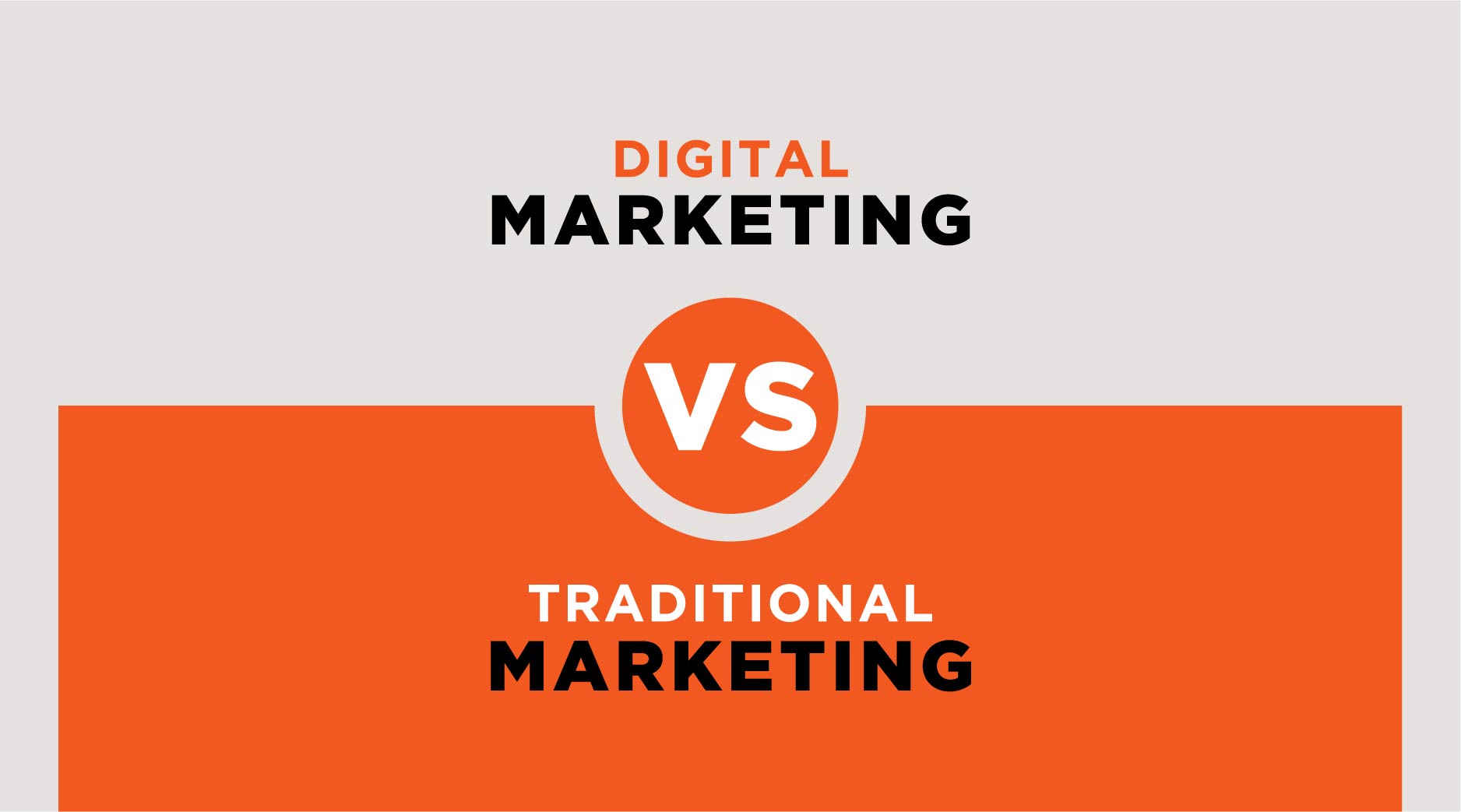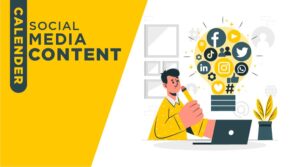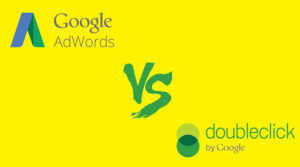In today’s age, marketing plays a critical role in a company/brand’s communication strategy. It is usually those activities that help a company in promoting its offerings and in turn converting prospects into leads.
Over the course of years, marketing has undergone several revolutions and has completely changed its form, mainly from physical (also known as traditional) to digital. In this blog we will explore in deep – the difference between digital & traditional marketing, types of digital marketing, and its benefits.
Table of Contents
Types of Marketing
To know the difference between digital & traditional marketing, you should know what they are. Physical marketing which is also known as traditional marketing comprises communication mediums like print (newspapers, magazines, flyers, brochures, telemarketing, posters, and billboards), radio, and television.
Digital on the other hand comprises online mediums and devices such as Google, Bing, Yahoo, Facebook, Instagram, Youtube, Pinterest, etc. Combining the promotional messages across both these domains, it would be safe to say that an average individual sees thousands of ads in just a single day.
What is Traditional Marketing: In-depth review
Traditional Marketing is referred to those marketing/promotional activities that are undertaken in a conventional fashion. These activities have been used since ages by brands to advertise and at times by political parties/government to spread propaganda.
The medium through which traditional marketing is executed involves only one-way communication, E.g. newspaper, television radio, and magazine. The main objective of traditional marketing is concerned with reaching a large and diverse range of audiences and achieving high numbers.
This means that the brand would communicate with a large number of people and hence attract a higher no. of leads. The main difference between digital & traditional marketing is that the latter is a static, low-converting, low-engaging, and localized form of marketing.
Although a large number of people may come across traditional marketing but tracking its results is difficult. There’s not much targeting you can do except the location and people residing/passing there.
Types of Traditional Marketing
1. Print Marketing
Print marketing includes newspapers, flyers, posters, magazines, pamphlets, journals, etc. It provides daily news, classifieds, interest-based articles. Print earns income by way of promotions and local advertisements.
2. Broadcasting
Broadcasting includes television and radio, which offers its viewers/listeners – knowledge, information, news, and entertainment. It generates revenue through advertisements.
3. Outdoor Marketing
Billboards/Hoardings are two primary ways of outdoor marketing that play an important role in influencing consumers over time.
4. Telemarketing marketing
Telemarketing/SMS marketing involves marketing the product or services to the cellular users via telephone or SMS.
5. Direct Mail
Known as advertising mail, it’s the process of delivering promotional material to people through postal mail. It may include brochures, newsletters, flyers, postcards, catalogs, sales letters, etc.
6. Referral Marketing
Known as “word of mouth marketing”, it involves the customers relaying information relating to the products and services to their friends, families, and colleagues.
Benefits of Traditional Marketing
-
Generates High Impact and is easy to understand
Watching a strikingly bold billboard or a highly creative TV advertisement is a regular affair of most people’s day-to-day lives. These visually striking and impactful ads are easy to digest and often entertaining.
-
Print marketing materials last longer
Marketing through a print medium can extend the promotional material’s lifespan to a significant extend. Adverts in newspapers/magazines of reputed firms like The New York Times, Wall street journal, Dainik Bhaskar, The Times of India, etc. will be there to remind prospects of its advertised products. If the consumer is an avid collector, things become sweeter than ever.
-
More memorable
Seeing innovative and tangible marketing materials in real life is more likely to be remembered by an individual. The new Super-Bowl ads on TV, an impressive window display, or a beautiful billboard is more likely to stay in your mind than a digital post.
Cons of Traditional Marketing
-
Difficult to measure campaigns
While understanding the difference between digital & traditional marketing you will observe that there is no sophisticated way or technology that would help in measuring traditional marketing campaigns as accurately as digital marketing.
There exist some ways to track and measure these campaigns such as brand trackers but unfortunately, they are not as intelligent as the tools available for digital marketing.
-
Generally expensive
If you’re a small/medium business, chances are you might not be able to afford to display your marketing material on billboards or on a 4-page spread in magazines Vogue. Many types of traditional marketing will hold you back for obvious reasons.
-
No direct interaction with the consumer
Since it’s a one-way communication, with traditional marketing you’re more or less aloof about your audience’s response to your marketing efforts.
What is Digital Marketing: In-depth review
Digital marketing is a broad term that encompasses each and every online marketing effort. In digital marketing, brands take into consideration all the digital channels that may help them to reach their existing and potential customers.
The online channels include Google search, bing/yahoo search, social media- Instagram, Facebook, Linkedin, Pinterest, Twitter, email, websites, so on and so forth. One thing to note is that the most critical technology, upon which digital marketing depends is the ‘Internet‘.
In blunt terms, the main difference between digital & traditional marketing is that the former is executed online on the internet.
Nowadays, there are digital marketing agencies that help businesses connect with their target audience, transform leads into customers and retain the customers by building strong relationships. Such a digital marketing agency is Sampark Infoways. Visit the website to know what its expertise is and how it can help businesses achieve their targets.
One of the primary differences between digital & traditional marketing is that in the former, the market becomes an even playing field. This would mean that a start-up company having less turnover will have the same opportunities as a large enterprise has. In this domain, only the company that actually performs well- emerges victorious.
Types of Digital Marketing
1. Search Engine Optimization (SEO)
Process of optimizing a website in such a way that it ranks high in the search results. This process also increases organic traffic on the website.
2. Content Marketing
Creating, publishing, and marketing content for a targeted group, in order to create brand awareness, boost traffic, develop leads, etc.
3. Inbound Marketing
Process of assisting potential customers in discovering your business, via social media, branding, content marketing, etc. to attract, convert, close, and delight customers.
Also read: What is Inbound Marketing and Why is it Right for Business
4. Social Media Marketing (SMM)
Process of marketing your brand over social media platforms like Facebook, Instagram, Pinterest, Twitter, LinkedIn, Snapchat, etc. Assists in generating brand awareness, increasing traffic, and generating leads.
5. Pay Per Click (PPC)
An advertising model, typically used to drive traffic to a company’s website, wherein the company pays the publisher a pre-determined sum, every single time when the advertiser company’s ad is clicked.
Also read: What is Pay Per Click?
6. Affiliate Marketing
Process of marketing other company’s offerings on your website and acquiring a part of the profit, for every sales conversion.
7. Native Advertising
A type of advertising that is similar to the type and function of the media upon which it appears. These ads are blended into the native or non-paid content, that’s why its named “Native”. ‘Sponsored Ads’ on Facebook, Instagram, Google Search is a typical example of such ads.
8. Email Marketing
A method of communication, promotion, and marketing with target customers by them sending emails relating to discounts, events, latest products, offers, etc., and steering them to the company’s website.
Also read: Why Email Marketing is not Dead?
9. Online PR
Short for online public relations. It involves public relations practices using an online platform such as social media, blogs, websites, etc.
Benefits of digital marketing
The pros of digital marketing are as follows:
-
Incredibly Cost-efficient
Startups, Small scale, and medium-scale businesses having minimum capital investment can discover better and affordable channels to market their products and services.
-
Evens up the playing field
The space of Digital Marketing makes it an even playing field for all. It doesn’t bar new players to set up their venture and offers equal and identical opportunities to all the enterprises be it a multinational corporation or a small company, to attract their potential customers.
-
Generate impact via powerful content
Often you would observe on the internet that content is regarded as king. Brands can influence their audiences right away if they have powerful and engaging content.
-
Boosts conversions
Digital marketing platforms are often regarded as high converting platforms. The success of any digital marketing campaign is determined by the rate of incoming traffic converted into customers.
-
High revenue generation
If the customer engagement and conversion are high, it will give you enhanced profits for your business. And in turn, the business can expand its base both domestically and internationally.
-
Generating brand awareness
Digital marketing helps a business in generating brand awareness among customers, by keeping them up to date regarding the latest products, offers, discounts, etc.
-
High ROI
Digital marketing requires low capital investments, and since the conversion and engagement rate is higher companies ultimately reap a better return on investment.
Cons of digital marketing
-
Digital ads are sometimes annoying
A person scrolling through his/her Facebook feed may want to see what his/her old school friends are up to these days. But then that person gets an unwanted sponsored ad for something related to a serious ailment you searched the night before and makes his/her mood bad.
This would also make that person actively dislike the brand doing this clever targeting. This is a highlighting difference between digital & traditional marketing.
-
Temporary
Digital marketing materials are intangible and can be easily ignored. Your digital marketing efforts like Google ads, online banners, promo emails, or social media ads can persist only till the user doesn’t scroll past it. It definitely has a fleeting and temporary character.
If your potential audience keeps scrolling or clicking to the next page mindlessly, your ad will be gone from their screen. The marketing material you created with so much effort, at times would not even get a glance from a single user.
-
Continuously evolving
There is so much to learn to get the most benefit out of your digital marketing efforts. Each and every channel generally needs its own specialist, be it search engine marketing to social media, every channel requires a professional to extract the best bang for your buck.
However, if the above resource isn’t available, basic social media or digital marketing strategy is a great way to start.
Summing it Up!
Hope by now you’ve understood the various aspects, pros, cons, and quirks of these two marketing methods. With the information laid out to you in this blog, you will be able to correctly identify the difference between digital & traditional marketing and choose the most appropriate marketing for your business’s objectives.
So that’s us wrapping up today’s blog, we’re Sampark Infoways – an all-round IT solutions provider located in Raipur and Mumbai, India. Hop over our site to know more about our services. And we’ll see you in our next blog.



